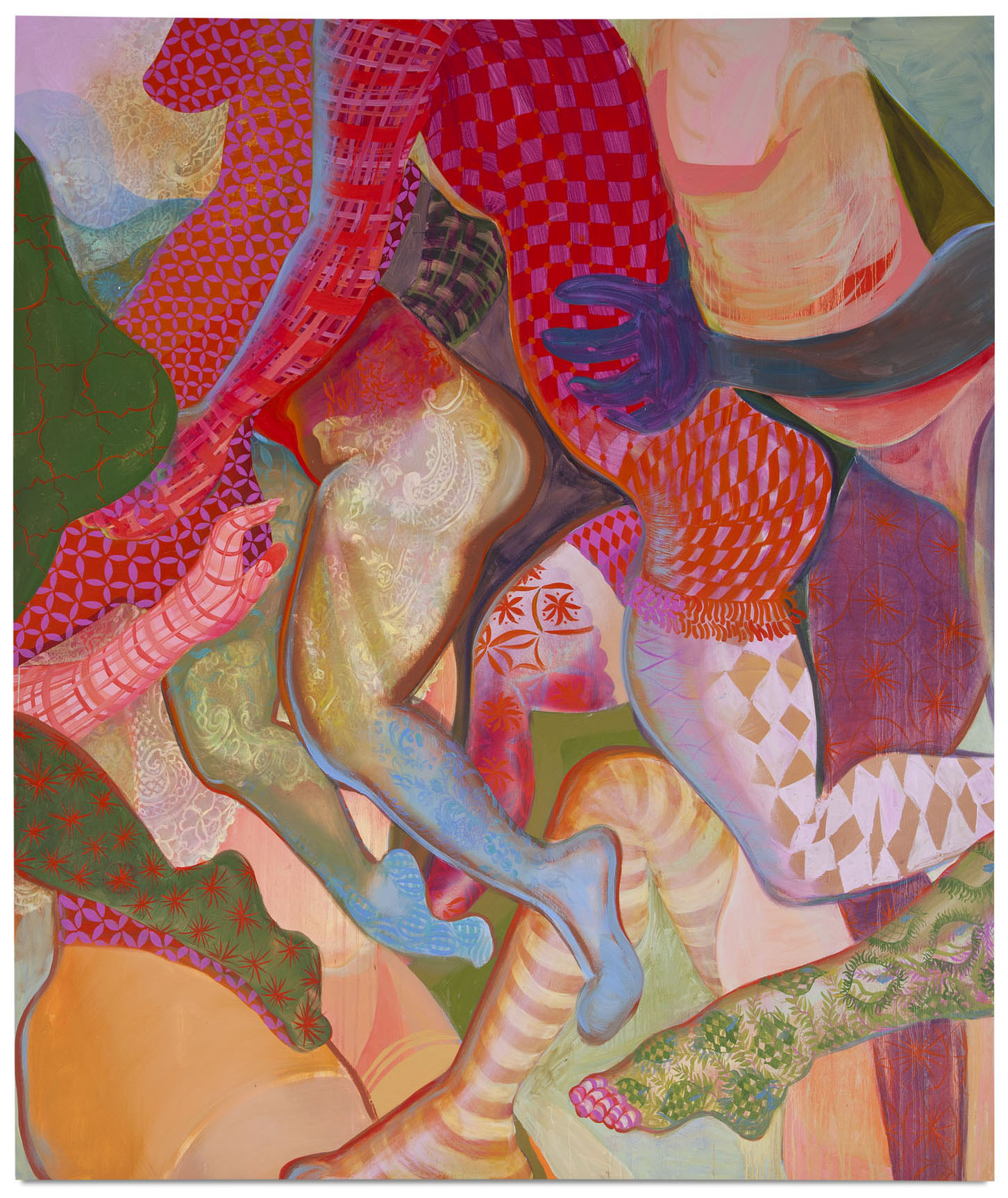Engender at Michael Kohn Gallery
by Eve Wood
Engender, a group exhibition curated by Joshua Friedman at Michael Kohn Gallery, represents an amalgam of familiar visual tropes, albeit shattered ones. Ideas about identity, sexuality and personal choice are brought to the fore in this stunning line up that includes the likes of Nicole Eisenman, Hernan Bas, Jansson Stegner and many others. Gender, despite decades of protests from the far right, has always been a fluid and limitless terrain of invention, radical thought and experimentation. This exhibition certainly challenges the oft binary representations of sex, expanding our definitions of male and female into a broader more cohesive discourse.
The fact that the exhibition is made up entirely of paintings is also significant in that it forces us, as viewers, to further examine these tropes. A few of the artists in the show deal with these disparities and cultural inconsistencies more directly. Jansson Stegner ‘s strangely unsettling image simply titled Julie is both awkwardly seductive and highly contemporary. If Jan Vermeer were alive today, this might be his favorite painting – the young woman staring back at us, holding a volleyball, muscles bulging. Her expression begs our attention to look deeper beneath the surface.
Surface is a theme in this exhibition, or rather the deconstruction of surface, how we as viewers have an expectation of what a painting’s surface should look like and the narratives projected therein. Jesse Mockrin’s enigmatic paintings subvert our expectations more than most. Working with imagery based on Old Master paintings, works like In Mid-Stream bring to mind the striking and oft unsettling imagery of Caravaggio’s best work. Mockrin has cast young boys, their limbs contorted into odd positions, as unwitting heroes in a narrative that is obscured and shrouded in darkness. As with Stegner’s work, there is a great deal of sexual tension in the imagery mainly because we cannot see their faces only arms and legs, grasping at the surrounding space.
Still other artists utilize space in interesting and unexpected ways. Hernan Bas’ also cast youthful men in his images and, again, like Mockrin, these boys are held captive by inaction, or rather failed action. The space in Bas’ images is tense and threatening. In The Pink Neurosis, a young man appears to be embracing empty space, his eyes closed as though he is unaware of the emptiness as the pink burgeoning shapes around him appear to be closing in. Jonathan Lyndon Chase is another artist who explores gender as a fluid perception wherein male bodies transform into female bodies right in front of our eyes. In Day Dreaming two young African American men stand holding each other, a complicated gesture that is both masculine and feminine, powerful and tender. But it is Nicole Eisenman’s Were Artist that speaks to the broader notion of what it is to be an artist in today’s contemporary culture. Identity can be a slippery slope, but one thing is true above all else, whether you are a man or woman, trans, queer, etc. that slope is made that much steeper, the road that much more difficult in choosing to be a creative person at all.

